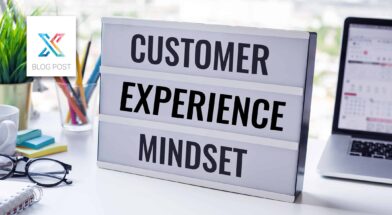Your firm invests hours brainstorming and planning ways to improve internal processes and service delivery to clients. Do you know whether your initiatives set you up for sustainable success or disheartening disappointment?
For initiatives to succeed, a stable structure is crucial, and this starts with understanding your team of employees and your clients.
- How your team works with each other, exemplifies your firm’s core values, and actively listens to anticipate client needs are key indicators of employee loyalty.
- How your team collaborates to deliver products and services will directly affect the chances of clients returning and sustained client loyalty.
- Understanding the potential critical moments of truth, friction points, and moments of delight clients will experience when working with your firm allows them to respond proactively to their needs.
To create a stable structure for successful initiatives, you need a strong foundation, a solid roof, and a carefully aligned support system between the two. That keeps the entire structural framework intact. When it comes to maturing into sustainable practices, consider this analogy:
- Your foundation is your firm’s Core Values,
- The support systems are your Employee Experience (EX) and Client Experience (CX) practices, and
- The roof is employee and client loyalty to your firm.
Let’s look at each of these to see how they work together to create a stable structure.
Core Values
Core values provide the foundation for your firm's day-to-day and strategic business decisions. This includes decisions involving interactions with fellow employees and clients, potential merger and acquisition conversations, ownership transitions, hiring, and ensuring that a client is a good fit —because some clients just aren’t.
Your firm’s core values bring everyone together under the same roof with the same expectations and understanding of how your firm will deliver services internally and externally.
It is important that your firm’s core values be more than just words on a website or a poster hanging in the office; they need to be indoctrinated into your firm’s culture to create sustainable success.
Every employee should understand the company's core values and ensure that these values are reflected in all aspects of the firm's operations and services. When clients discuss the company, their conversations should embody descriptions of the firm's core values.
EX and CX Practices
How well do your team members work together? Do they encourage and mentor one another? How well do they know your clients? Do they anticipate client needs rather than simply provide solutions for their stated wants?
To ensure your ‘support system’ remains aligned, resisting the temptation to assume you know what others want and need is vital. To maintain alignment, make it your goal to know what they want and need. The only way to do this is to ask.
Providing an outstanding experience to both your internal and external clients means so much more when you take the time to get to know and understand their needs and challenges and guide them through their vision of the end product.
Loyalty
In professional services, consistency of service delivery that acknowledges individual client needs creates that solid roof structure. If employees do not work well together and service delivery is inconsistent, our roof (and our clients’ loyalty) begins to leak.
Developing consistent processes can seem overwhelming. Instead of fixating on the BHAG (Big Hairy Audacious Goal), take an iterative approach. What have you heard from your clients? What are some of the areas that multiple clients have identified as opportunities for your firm to serve them even better?
One strategy for bringing these ideas to the forefront is to bring key team members together to discuss your clients’ impressions of different stages of working with your firm and create a Client Empathy Map.
Client Empathy Mapping is a simple way to visualize the totality of a client’s experience. A Client Empathy Map allows you to quickly, clearly, and simply build a better picture of the underlying drivers of your customers and then proactively respond to those needs.
Through empathy mapping, you can discover your customers' motivations, concerns, and experiences that define their goals, points of interest, and critical vulnerabilities. From here, you can better understand why your clients take certain actions.
Having an empathy mapping strategy in place can help your business shift its focus from the products and services you offer to the users behind them, increasing customer satisfaction and loyalty.
Conclusion
Successfully implementing service delivery initiatives requires a strong structure based on understanding the needs of both employees and clients. Knowing how your team works together, represents your core values, understands your clients, and delivers service, as well as understanding your clients' motivations and drivers to proactively address their needs, are equally important for service delivery success.
Client Empathy Mapping is an excellent way to build a strong structure for your CX initiatives, setting your firm up for sustainable success rather than disheartening disappointment.
Contact us to learn more about Client Empathy Mapping and how it can benefit the structure your professional services firms’ CX initiatives.





